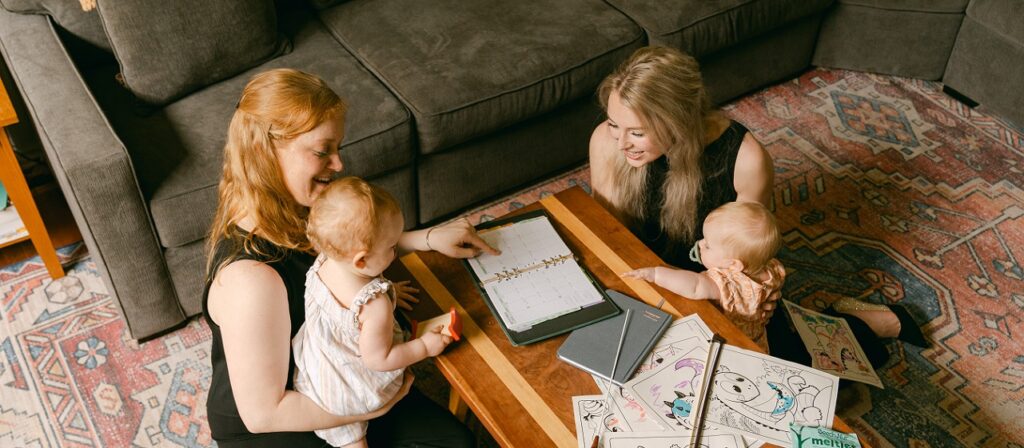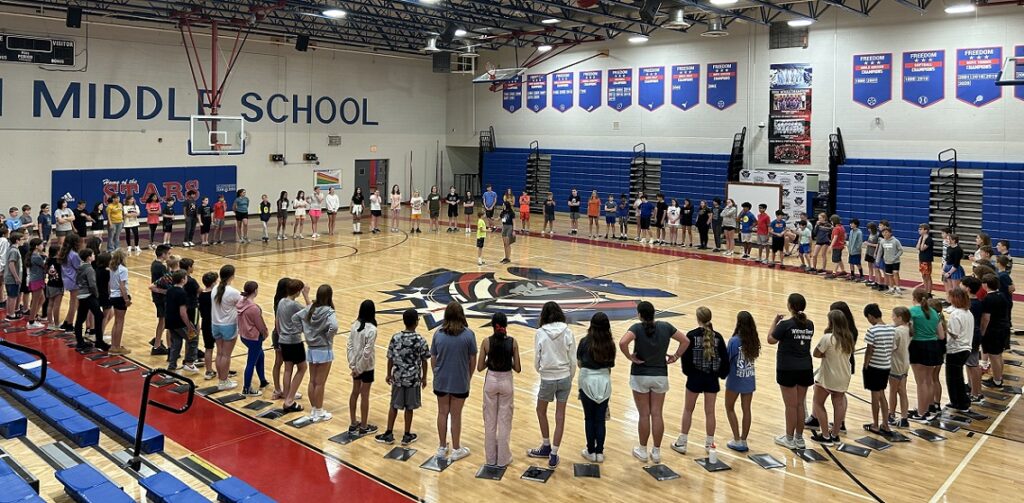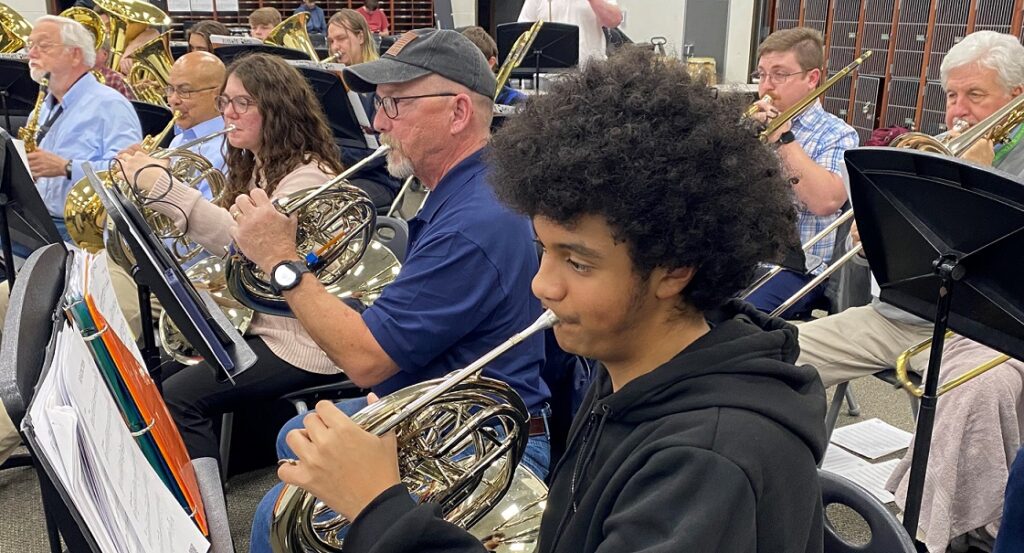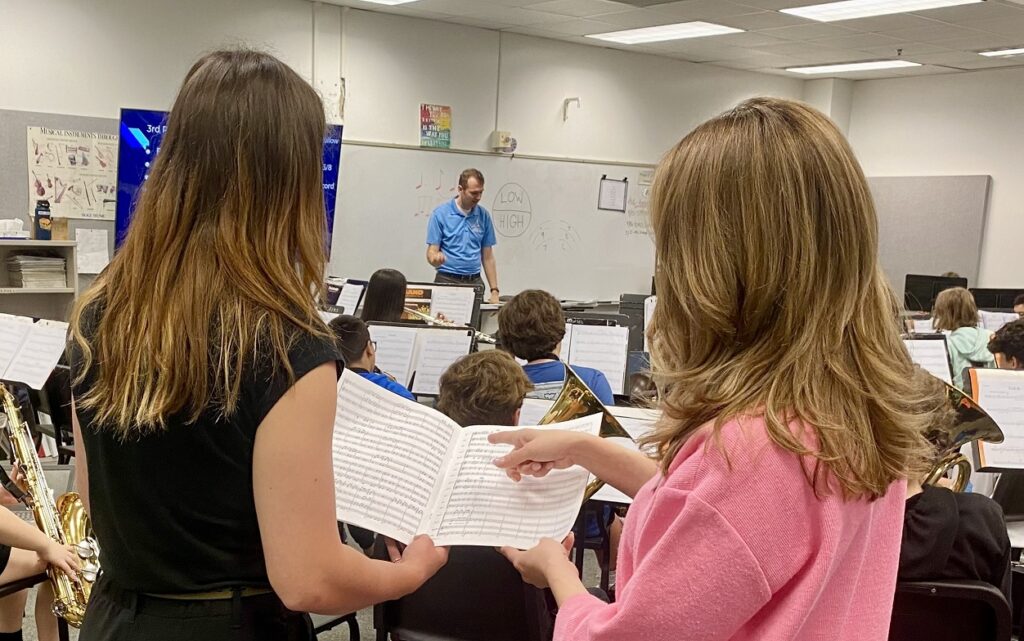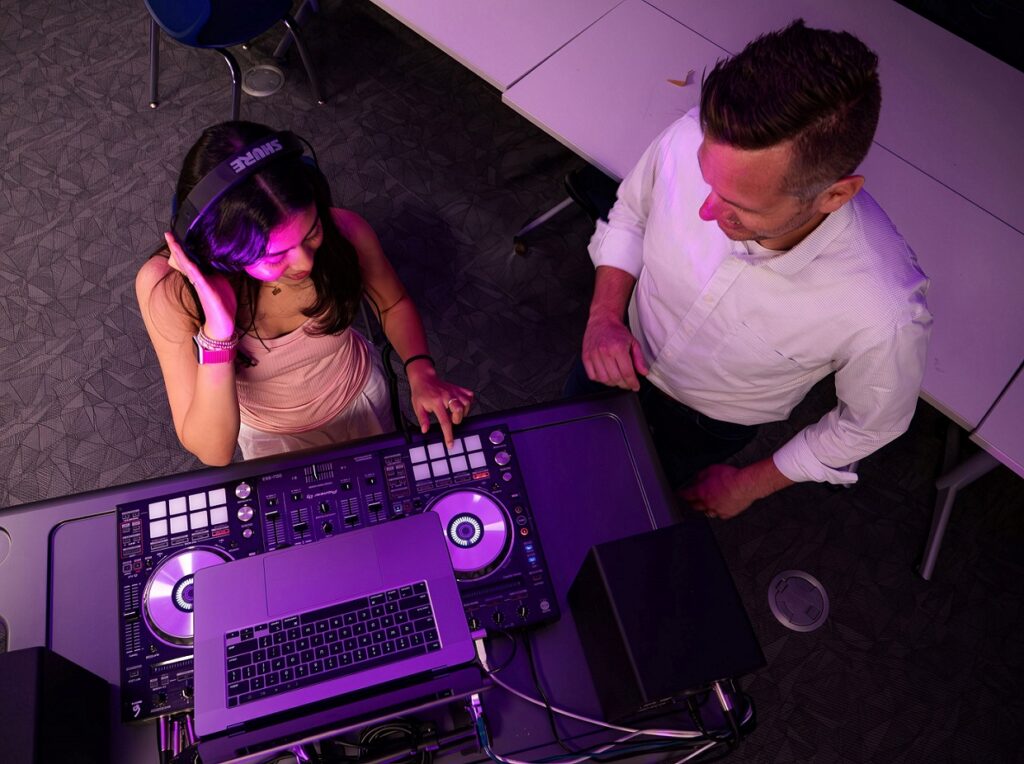Tagged Under:
Putting Power into Students’ Hands
Through a method called Gradual Release of Responsibility, a South Carolina music teacher helps students develop critical thinking and leadership skills.
Band members at York Middle School in South Carolina wear more hats than just one that reads “student.” They’re also leaders, critique partners and sometimes even each other’s teachers. Director of Bands Dylan Sims introduces the students to leadership through a method called Gradual Release of Responsibility (GRR), which slowly gives students more control and leadership over the band ensemble as the school year unfolds.
“[GRR allows] students to take ownership of their learning, as opposed to the teacher lecturing or telling them what’s wrong,” says Sims. “Students develop critical thinking skills to analyze their performance. That way, they can make intelligent musical decisions about how to improve on an individual and on an ensemble level.”
Foundations of Feedback
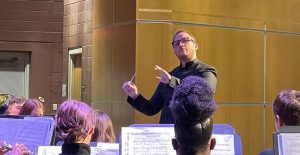 Sims first encountered GRR as a pedagogy during his college years, and then began developing his approach more with each teaching job. “I was a super nerd in college, so I read everything I could get my hands on,” he says with a laugh.
Sims first encountered GRR as a pedagogy during his college years, and then began developing his approach more with each teaching job. “I was a super nerd in college, so I read everything I could get my hands on,” he says with a laugh.
While Sims has incorporated GRR into every teaching job that he has had — including learning from his superiors when his second school implemented GRR on a district-wide level — Sims has found that in the post-COVID world, GRR is especially important. “Coming out of COVID, kids are at varying levels of social-emotional growth,” he says. “Putting the power in the students’ hands to take ownership of their learning is vital.”
At the core of GRR is feedback. During the course of the school year, students gradually become more responsible for critiquing themselves and one another. When the school year begins, Sims will have students play a piece of music and then he will play back a recording while they listen. Then, he and the students make a list on the board together of what they did well and where they have room for improvement.
“Younger students, who are developing musicians, are not always listening when they’re playing,” Sims says.
Helping students listen and play simultaneously is the first step.
Then, Sims prompts students to brainstorm strategies for improvement. “We open the conversation with, ‘What can you do as an individual to improve?’” says Sims, citing examples like using more air and remembering to tune during warmups. “I focus on the individual first. Then, we talk about students within [each] section,” he says.
Throughout the first month of the school year, Sims guides his students to make their own comments during warmup time, slowly moving from the individual to the section and finally to the ensemble as a whole.
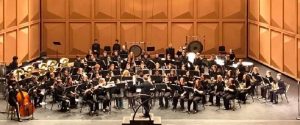 Once students have mastered analyzing their own performances during warmup, Sims starts letting them guide exercises in method books. Here, transfer of knowledge is key. Students learn to apply their critiques from the warmup to their analysis of the actual rehearsal. “Sometimes, kids will get stumped,” he says. “I can ask leading questions like, ‘During the warmup, you said tuning was an issue. What did we do during the warmup?’ And then [they fix it] almost immediately.”
Once students have mastered analyzing their own performances during warmup, Sims starts letting them guide exercises in method books. Here, transfer of knowledge is key. Students learn to apply their critiques from the warmup to their analysis of the actual rehearsal. “Sometimes, kids will get stumped,” he says. “I can ask leading questions like, ‘During the warmup, you said tuning was an issue. What did we do during the warmup?’ And then [they fix it] almost immediately.”
As the school year progresses, students gain the ability to identify their strengths and weaknesses on their own. “I really think it is important for students to be able to think for themselves and to make their own decisions,” Sims says. “Students are bright — they can think intelligently as long as you give them some parameters.”
By the end of the school year, Sims trusts his students to run most of their class and rehearsal time efficiently. “If I’m ever out sick or at a conference, students can run the class on their own and still get a lot done,” he says.
Teamwork Makes the Music Work
The GRR method works best when students can trust and rely on each other for valuable feedback and direction. This fosters a team environment, which is key, according to Sims. “I tell the kids all the time, whenever you’re in band and playing music together, it’s ‘we’ and ‘us,’ not ‘I’ and ‘me,’” he says.
Sims rotates which students he assigns as leaders during each rehearsal, providing all students with an equal opportunity to give and receive feedback.
Because some students are more comfortable in front of a crowd than others, this approach can sometimes pose challenges. “You always have the go-getters in every ensemble,” Sims says. “In order to get everyone on the same comfort level, I’ll often pair a timid student who may not feel comfortable speaking publicly with a more outgoing student.”
Forming students into pairs or small teams can be an effective way to assuage any discomfort. “Usually, everyone feels comfortable in a group for the most part, especially at the middle school level,” Sims, who was recognized as a 2023 Yamaha “40 Under 40” music educator, says.
Maturity and Motivation
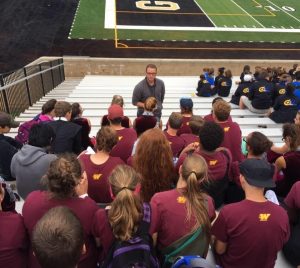 Middle school students are often in a developmental stage that blends high energy with social uncertainty. To keep his classroom running efficiently, Sims sets high expectations for his students’ maturity level. “Depending on the kid or the age level, sometimes it takes a little while to teach the maturity behind making intelligent musical comments,” Sims says. “Some students have a tough time either giving constructive criticism or receiving it.”
Middle school students are often in a developmental stage that blends high energy with social uncertainty. To keep his classroom running efficiently, Sims sets high expectations for his students’ maturity level. “Depending on the kid or the age level, sometimes it takes a little while to teach the maturity behind making intelligent musical comments,” Sims says. “Some students have a tough time either giving constructive criticism or receiving it.”
Because many young teens can be sensitive, Sims stresses the importance of keeping feedback constructive and focused on improvement. “We have a talk: ‘Just because it says on the board that flutes are out of balance, that doesn’t mean what you’re doing is bad. It just means that what you’re doing could be improved to make us better,’” he says.
At the beginning of class, Sims sets an expectation that students will behave like adults during rehearsal. “I tell kids, ‘I get it. None of you have ever had a big-person job before. When you get in my room, for 44 minutes, you are on the clock.’”
To help keep students focused, Sims assigns a “weekly sheet” that they keep on their music stands next to their music. Students are expected to write down the comments they receive from one another on their weekly sheets. “They’re constantly engaged when I’m saying something or a commenter is saying something,” Sims says.
Building the Band
According to Sims, students begin to show their maturity as they understand their role as members of the band rather than just as individual performers. As a result, he builds time into class periods for students to bond. “At the beginning of class, I’ll say, ‘Turn to the people on your left and right and ask them what they’re having for lunch today,’” Sims says. “At the end of class, I’ll say, ‘You have to fist bump three people on your way out the door.”
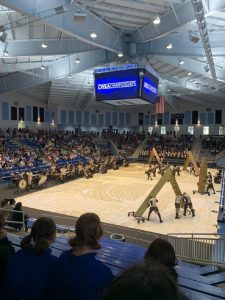 By making an intentional effort to engage students with one another, Sims breaks down typical preteen cliques, helps students come out of their shells and builds the band into a cohesive unit. “What’s awesome is, whenever kids come into the band room for the first time, they’re all in these little friend groups,” Sims says. “As the year progresses, you’ll see them with a different group.”
By making an intentional effort to engage students with one another, Sims breaks down typical preteen cliques, helps students come out of their shells and builds the band into a cohesive unit. “What’s awesome is, whenever kids come into the band room for the first time, they’re all in these little friend groups,” Sims says. “As the year progresses, you’ll see them with a different group.”
For Sims, GRR isn’t just about helping students improve musically; it’s an approach that teaches students self-reliance and teamwork, and it’s an approach that students can apply in their other areas of study as well. “I’ve not only incorporated this into band, but also tell students, ‘You can do this literally anywhere,’” he says.
When students learn to take ownership of their education and trust one another as peers, the classroom also becomes a more welcoming place for diversity and inclusion. For example, when students have to discuss the ways they can improve their musicianship, they learn conflict resolution and find common ground. “We’ll have these conversations like, ‘Hey, there are 92 of us in here,” Sims says. “We’re all different people with different backgrounds, yet all of us came to the decision that these were the things that are great and these weren’t.”
Whether it’s gradual improvement on a particular piece of music, or an overall sense of teamwork and camaraderie, Sims says that GRR is helping his students develop both as musicians and as people. “I am proud that I’ve been able to instill those values in my students, especially in the last couple of years,” he says.
For the 2023-2024 academic year, Sims moved to Gold Hill Middle School in Fort Mill, South Carolina, as the Associate Director of Bands.










